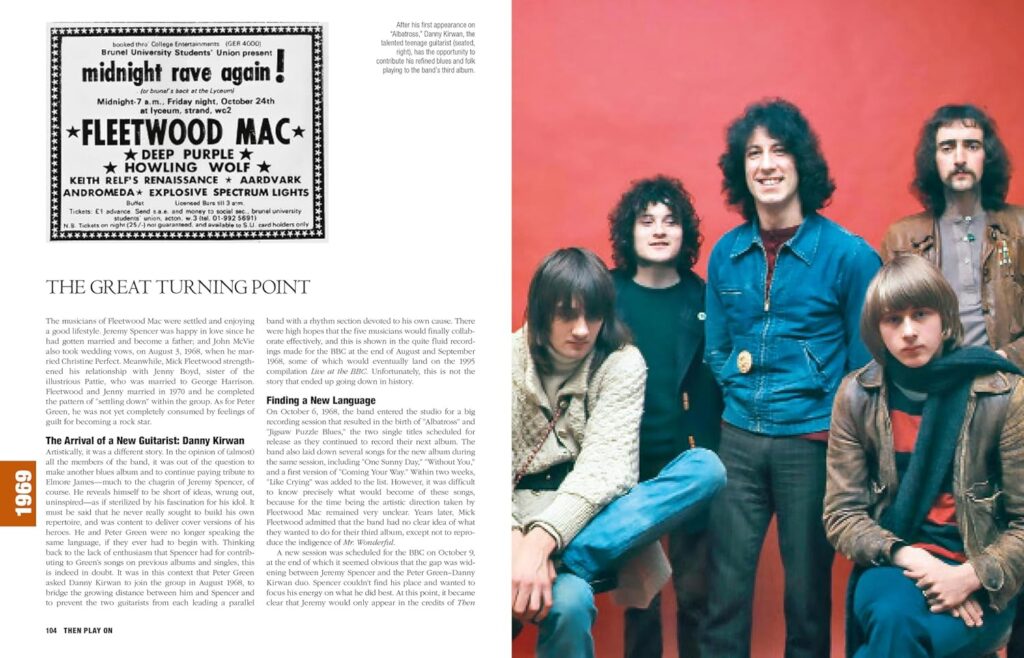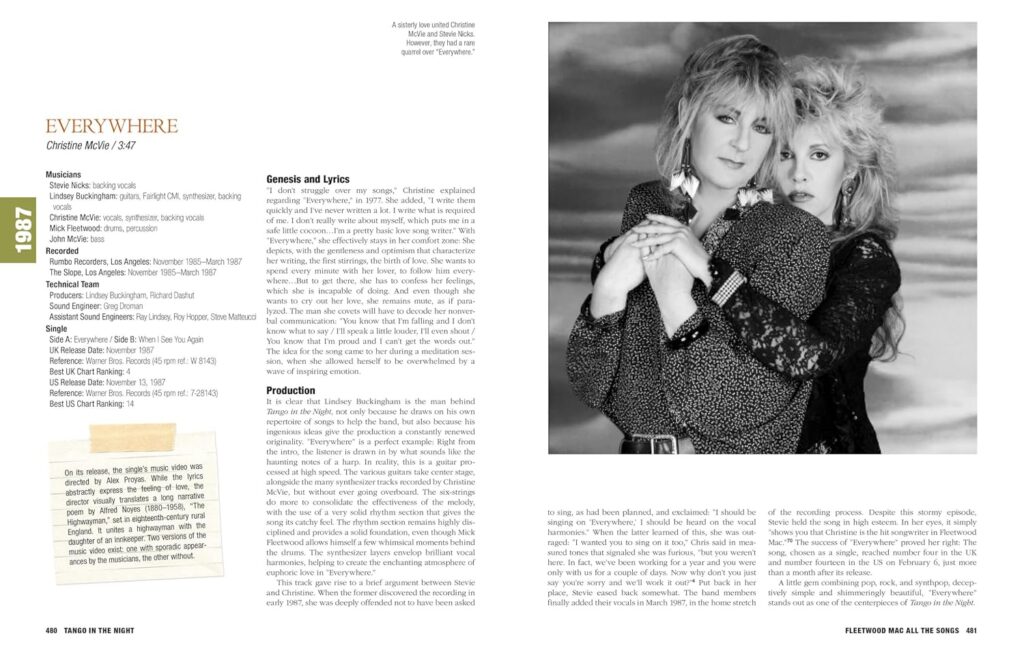‘Fleetwood Mac: All the Songs’ Examines the Band’s Discography: Book Review
by Jeff Burger Unless you were born yesterday or spent the last half century in a coma, it’s likely that you’re familiar with Fleetwood Mac—or at least with its most successful albums and singles, which have been omnipresent on radio and in our culture since the mid-1970s. However, it’s also a safe bet that there’s plenty you don’t know about this band, which existed in various incarnations for more than 50 years. Its colorful history embraces lots of little-known stories and recordings, 15 lineups and more than two dozen studio and live albums.
Unless you were born yesterday or spent the last half century in a coma, it’s likely that you’re familiar with Fleetwood Mac—or at least with its most successful albums and singles, which have been omnipresent on radio and in our culture since the mid-1970s. However, it’s also a safe bet that there’s plenty you don’t know about this band, which existed in various incarnations for more than 50 years. Its colorful history embraces lots of little-known stories and recordings, 15 lineups and more than two dozen studio and live albums.
A fat new book, Fleetwood Mac: All the Songs, will bring you up to speed. The volume is part of a series that includes similar tomes by various authors on such acts as the Beatles, Pink Floyd, the Rolling Stones, Bob Dylan, David Bowie and Bruce Springsteen. This latest volume was authored by two well-credentialed French writers, Olivier Roubin and Romuald Ollivier, who also produced 2023’s Elton John: All the Songs.
[Fleetwood Mac All the Songs: The Story Behind Every Track arrived April 1, 2025, via book publisher Black Dog & Leventhal. The 608-page title is available in the U.S./worldwide here, in Canada here and in the U.K. here.]
The centerpiece of the copiously illustrated new book is a chronological discussion of Fleetwood Mac’s catalog. It starts with the group’s eponymous 1968 debut, which features only two players, Mick Fleetwood and John McVie, who remained in the lineup long-term. It ends with 2003’s Say You Will, the band’s 17th and final studio album. In addition to offering an essay on each LP, the volume lists details about individual tracks, such as the composer’s name, the song’s length and personnel, the recording place and date, and the producer. It then goes on to discuss the tune’s genesis, lyrics and production. Even outtakes are covered.
Related: Our Album Rewind of Fleetwood Mac’s Mirage
Sprinkled throughout the five-pound, 608-page book are assorted other essays with titles like “The Roots of Fleetwood Mac” and “The Death of Peter Green,” as well as many boxed bits of sometimes noteworthy, sometimes inconsequential trivia. We learn, for example, that the Flying Burrito Brothers’ Sneaky Pete Kleinow contributed to a song on Heroes Are Hard to Find; that “Warm Ways” was issued as a single only in the U.K. because the group’s record label believed “Over My Head” was a better fit for the American market; and that live versions of “Sisters of the Moon” stretched to an average of eight minutes on the Mirage tour. Also, the title “Gold Dust Woman” is believed to be derived from Gold Dust Lane, a street in Wickenburg, Arizona, where the group’s Stevie Nicks lived as a child.
The book doesn’t quite live up to its subtitle, “The Story Behind Every Track.” Songs that appeared only on live albums aren’t considered, though the volume does include a discography that lists them. Moreover, discussion of 1969’s terrific Blues Jam in Chicago is limited to the band originals it contains; for some reason, there are no sections on the album’s many noteworthy cover versions, although the authors do discuss readings on other Fleetwood Mac LPs of tunes like Bob Nolan’s “Cool Water” and Fats Domino’s “Blue Monday.”
However, this is a quibble about an authoritatively written, in-depth look at the super group’s catalog. In fact, it’s probably too in-depth for casual listeners. But rabid fans will eat it up and learn plenty in the process.







No Comments so far
Jump into a conversationNo Comments Yet!
You can be the one to start a conversation.